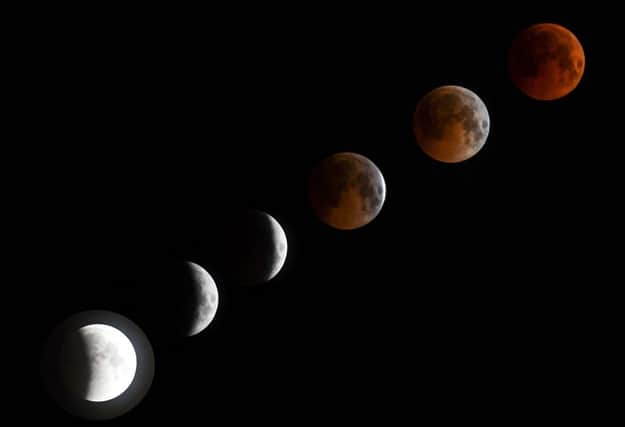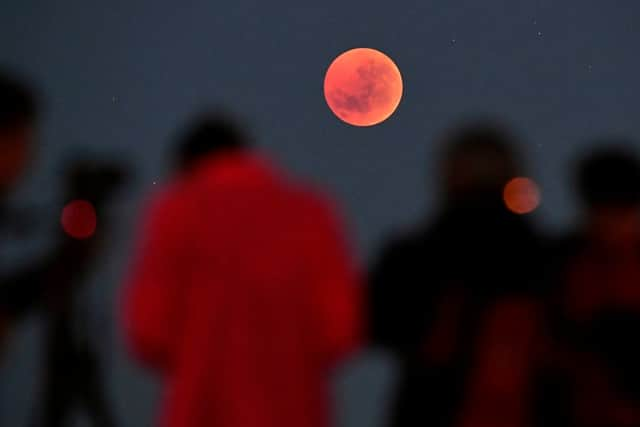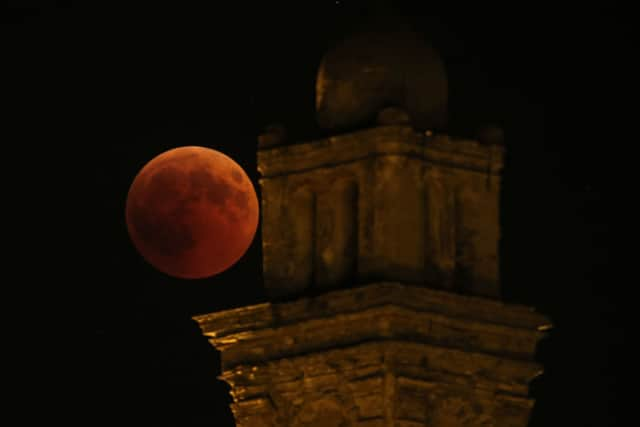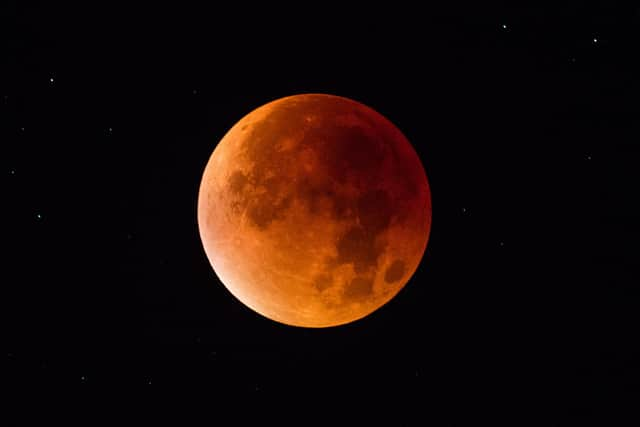Total lunar eclipse May 2022: how to see Blood Moon eclipse in the UK - and when is it?


The first total lunar eclipse in a year will take place on Monday - and as part of it sky-watchers will see the Moon turn red.
During the early hours of Monday morning (16 May) the incredible Blood Moon eclipse will grace the skies.
Advertisement
Hide AdAdvertisement
Hide AdIt will be the first of the 2022 eclipses taking place this year.
Here’s all you need to know about the eclipse - and the best times to view the natural phenomenon.
What is a total lunar eclipse?
There are two kinds of eclipses that can occur - a lunar eclipse and a solar eclipse.
A lunar eclipse happens when the Earth’s shadow is obscured by the Moon, whereas during a solar eclipse, the Moon blocks the Sun from view.
NASA says: “Lunar eclipses occur at the full moon stage.
Advertisement
Hide AdAdvertisement
Hide Ad“When Earth is positioned precisely between the Moon and the Sun, Earth’s shadow falls upon the surface of the Moon, dimming it and sometimes turning the lunar surface a striking red over the course of a few hours.
“Each lunar eclipse is visible from half of Earth.”
These kinds of eclipses are often called Blood Moon eclipses because of the red colour the Moon is washed with during the event.


There are three different kinds of lunar eclipses that can happen:
- A total lunar eclipse, which is when the Moon moves into the inner part of Earth’s shadow (the umbra). Some of the sunlight passing through Earth’s atmosphere reaches the Moon’s surface which dimly lights it - the more dust or clouds in Earth’s atmosphere during the eclipse, the redder the Moon appears
- A partial lunar eclipse, which occurs when an imperfect alignment of Sun, Earth and Moon results in the Moon passing through only part of Earth’s umbra - the shadow grows and then recedes without ever entirely covering the Moon
- Penumbral eclipse, which is when the Moon travels through Earth’s penumbra, or the faint outer part of its shadow - the Moon dims so slightly that it can be difficult to notice if you aren’t specifically looking out for it
When is it?
In the early hours of Monday 16 May in the Western Hemisphere, the Moon will enter the Earth’s shadow, creating a total lunar eclipse - the first since May of 2021.
Advertisement
Hide AdAdvertisement
Hide AdIt will be visible across South America, most of North America and parts of Europe and Africa.
This is the schedule for the eclipse as listed by the Royal Observatory, based in Greenwich, London - the timing for the eclipse may vary by a few minutes for other parts of the UK:
- 2:23am: the penumbral eclipse will begin - the Moon will start to enter the Earth’s penumbra and will start to darken
- 3:27am: the partial eclipse will begin - the Moon will start to enter the Earth’s umbra, leaving its penumbra, and will darken considerably
- 4:29am: the full eclipse will begin - the Moon will have completely entered the Earth’s umbra and will start to turn red


- 5:06am: the maximum eclipse - this is when the Moon will be the closest to the centre of the Earth’s umbra
- 5:53am: the full eclipse ends - the Moon will start to leave the Earth’s umbra and go back into its penumbra, slowing losing its red colour
- 6:55am: the partial eclipse ends - the Moon will have left the Earth’s umbra entirely now and will completely lose its red colour
- 7:50am: penumbra eclipse ends
While the eclipse will last more than five hours in its entirety, UK viewers will only be able to see the eclipse from 2:32am until 5:10am, as the Moon will have set below the horizon by the end of this period.
The optimal viewing time for those watching the skies in the UK is between 4:29am and 5:06am.
Advertisement
Hide AdAdvertisement
Hide AdThe next total lunar eclipse will happen on 8 November 2022, however it won’t be visible from the UK.
How can I see it in the UK?
While UK residents won’t be able to see every part of the eclipse, you can still catch the lunar event at its height, when the Moon has turned red.
Lunar eclipses are much safer to watch than their solar eclipse counterparts. While you should never look directly at a solar eclipse, it’s safe to view a lunar eclipse with the naked eye, with no specialist equipment required.


Because you can look directly at a lunar eclipse, you can use binoculars or telescopes to magnify the view, but they aren’t specifically needed.
Advertisement
Hide AdAdvertisement
Hide AdAll you really need to see a lunar eclipse are clear skies and a good view of the Moon from where you’re located.
Ideally, you should choose a viewing area with the least amount of light pollution to ensure an unobstructed view of the eclipse.
Comment Guidelines
National World encourages reader discussion on our stories. User feedback, insights and back-and-forth exchanges add a rich layer of context to reporting. Please review our Community Guidelines before commenting.
